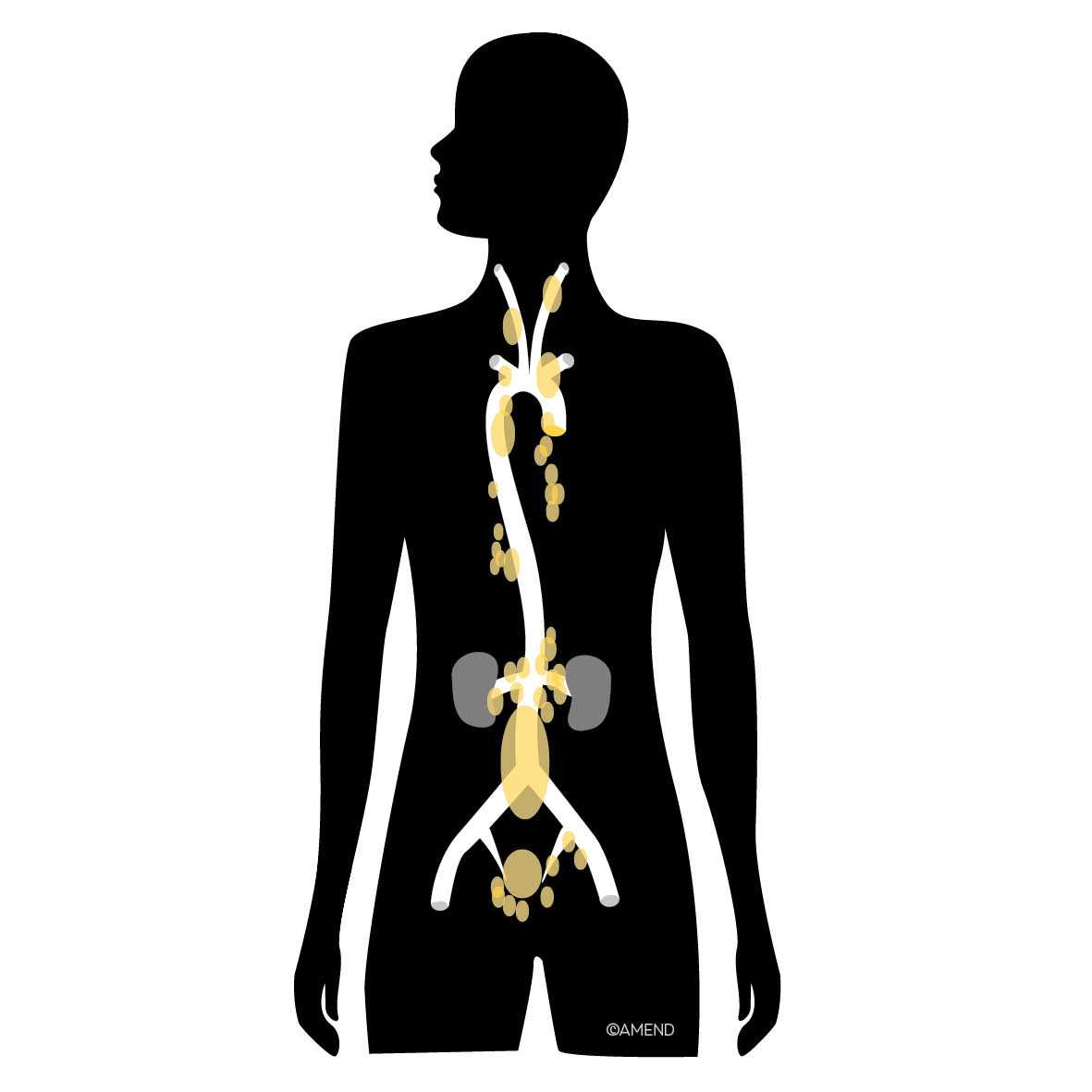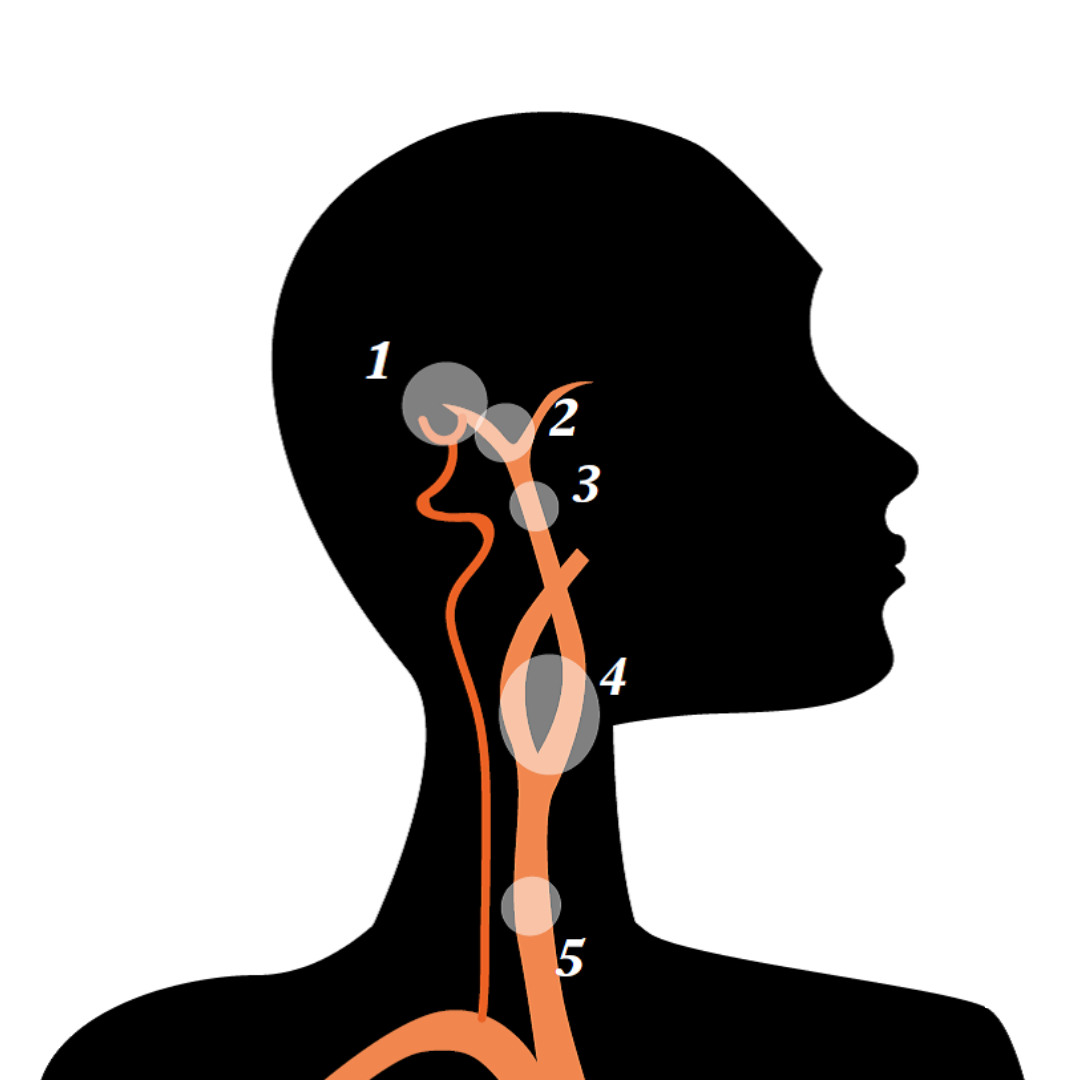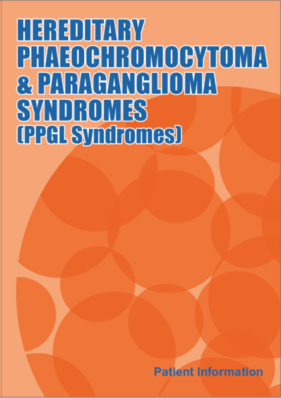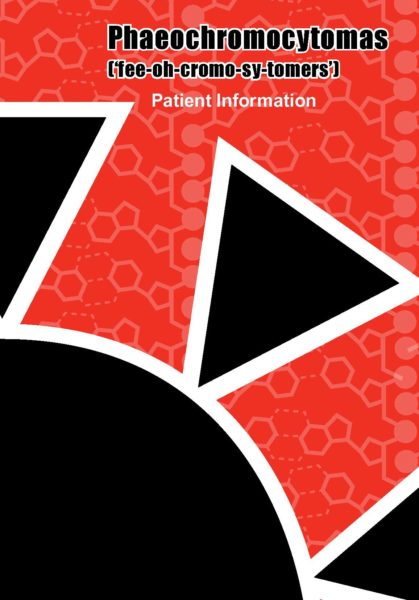What are Paragangliomas?
Paragangliomas (extra-adrenal paragangliomas) are similar to phaeos but are more rare and grow outside of the adrenal glands. Paragangliomas arise from the extra-adrenal paraganglia. These are cells that form part of the nervous system that runs between the base of the skull and the pelvis. Therefore, these tumours can develop anywhere between these two points.
What is known about Paragangliomas?
- This type of tumour is rare occurring in 1 per 100 000 people per year
- The majority (approximately 90% or 9 out of 10) are benign tumours (i.e. not cancer)
- The most common age for diagnosis is between the ages of 30-60 years of age, although 10% arise in children
- There is no sex difference or racial disposition
- Tumours occurring in children are more likely to be related to an inherited condition than those occurring in adults
-
 Paragangliomas can occur anywhere between the neck and pelvis
Paragangliomas can occur anywhere between the neck and pelvis
The type of symptoms that occur with these tumours can vary widely. They will depend on the size and site of the tumour, and whether or not it is making large amounts of hormones (functional or secretory tumour).
Tumours that are making large amounts of hormones (chemical messengers) may cause any of the same symptoms as phaeochromocytomas, but this is less common with paragangliomas.
Tumours that are not making hormones may cause symptoms if they grow large enough to push against other structures or organs in the body. For example; a paraganglioma in the neck area may push against the ear and affect hearing, or may push against the wind pipe and affect breathing or the voice.
Head and Neck Paragangliomas
Paragangliomas can occur in and around the head and neck and are collectively referred to as Head & Neck paragangliomas. There are four main places where the tumours often grow, giving rise to their tumour names: Carotid body (4), Vagal (3), Middle ear (Tympanic, 1), Jugular (2) and Laryngeal (5) tumours. There are varied risks of these tumours growing in the different PPGL Syndromes.
-
 Head & Neck Paraganglioma Sites
Head & Neck Paraganglioma Sites
Symptoms of Head & Neck Paragangliomas
Hormones are only rarely made by head and neck paragangliomas. This means that the symptoms that may occur are usually caused by the size and site of the tumours rather than by excess hormone production.
1&2) Middle ear/Jugular (jugulotympanic) tumours – may cause pulsing tinnitus (ringing or buzzing sounds) or hearing loss.
3) Vagal tumours – these occur higher in the neck than carotid body tumours and may cause a swelling or bulging of the tonsils at the back of the mouth.
4) Carotid body tumours – these occur in a group of cells between a branch in the carotid artery in the side of the neck. Therefore, you may be able to feel a lump on either side of the neck near where the lower jaw joins.
5) Laryngeal tumours – may cause shortness of breath, hoarseness when talking and wheezing when breathing. The tumours are rarely seen.
Diagnosis of Head & Neck Tumours
The type of tumour will be identified from the symptoms listed above, as well as from scans to find its location, and tests for markers that may be found in the blood. This will be confirmed by looking at the tumour under a microscope if there is surgery to remove it.
Due to the high risk of potential complications in surgery for head and neck paragangliomas, a conservative approach may often be used. This may involve ‘watch and wait’ or stereotactic radiotherapy (a single, precise beam of radiotherapy, also sometimes referred to as Gamma Knife Radiosurgery) to help shrink the tumour.
For more detailed information on testing and treatment of paragangliomas, please download our books below.
Managing Hormone Surges
For the inaugural awareness week for phaeochromocytoma and paraganglioma syndromes, our Counsellor, Kym Winter, has developed an informational video and complementary short videos with different techniques to try to help yourself through hormones surges of functional tumours. Although these occur rarely in paragangliomas, this may be useful if you do experience any troubling symptoms.
*These techniques are not intended to replace any medicine prescribed or advice given by your specialist.
-
Hormone Surges: Managing Anxiety and Riding Out the Wave
-
Progressive muscle relaxation
-
Four Square Breathing
-
Focus and Ground
-
5, 4, 3, 2, 1
Further Reading
-
Hereditary Phaeo Para Syndromes

New book! This patient information book explores and explains PPGL syndromes in more detail including treatment and genetics.
View Booklet
-
Phaeochromotyomas

We recommend that you discuss the content of this booklet with your specialist - it is not for use in self-diagnosis, and not all of the information it contains may be relevant to you.
View Booklet
Author: Jo Grey, AMEND CEO, with the help of the AMEND Medical Advisory Team
References and Information Production
Be involved
-
Make a donation
PPSUK is part of AMEND which is entirely funded by donations so any contribution is extremely welcome.
Donate now
-
Become a member
PPSUK values all our volunteers enormously and provides training and resources wherever possible.
Join us
-
Latest News
There’s always something going on at PPSUK. Check out the latest news
View News